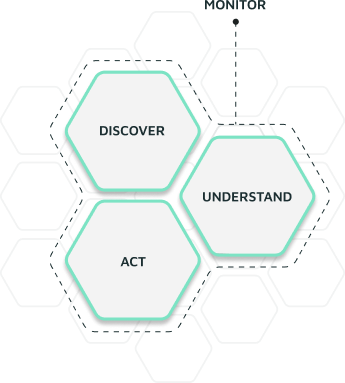


Integrate: Applied process mining to procurement workflows, linking demand forecasting with real-time inventory tracking. Supplier integration allowed automatic stock replenishment, while sales data from restaurant POS systems informed purchasing decisions.
Discover: Identified overstocking, inefficient purchasing patterns, and food wastage in buffet and restaurant services. Analysis revealed discrepancies between predicted and actual consumption, leading to excessive spoilage.
Understand: Analyzed sales data, supplier lead times, and consumption trends to optimize ordering. Seasonal fluctuations and event-driven demand were incorporated into forecasting models to fine-tune procurement cycles.
Act: Implemented automated restocking alerts and supplier integration to ensure timely replenishment of essentials. Dynamic pricing adjustments were introduced for perishable items nearing expiration to reduce waste.
Monitor: Used dashboards to track food usage, stock levels, and order fulfillment rates, adjusting procurement strategies dynamically. Automated alerts were set up to flag potential shortages before they impacted service operations.



Integrate: Connected process mining with housekeeping management systems and IoT-enabled maintenance tracking. Smart sensors were deployed in rooms to detect occupancy status and maintenance needs, feeding real-time data into task scheduling systems.
Discover: Identified inefficiencies in housekeeping scheduling and frequent maintenance disruptions affecting room availability. Historical analysis revealed trends in unexpected maintenance issues, such as plumbing and HVAC failures, contributing to extended room downtime.
Understand: Analyzed root causes of service delays, such as poor task coordination and unexpected maintenance requests. Further analysis of workforce allocation identified opportunities to dynamically adjust cleaning schedules based on real-time room readiness.
Act: Implemented automated housekeeping task assignment and predictive maintenance alerts, ensuring rooms were serviced efficiently. Integrated an AI-driven prioritization model to dynamically allocate cleaning teams based on check-out times and upcoming arrivals.
Monitor: Used real-time dashboards to track housekeeping performance, maintenance logs, and turnaround times. Automated alerts notified managers of potential backlogs or delays, allowing for proactive workforce adjustments.



Integrate: Implemented process mining with revenue management systems to analyze booking trends, competitor pricing, and demand fluctuations. Data pipelines were established to pull external market signals, such as competitor rates and regional events, into the pricing model.
Discover: Identified revenue leakage caused by static pricing models and inconsistent discounting strategies. Analysis also exposed fluctuations in revenue performance across different booking channels and customer segments.
Understand: Assessed historical data, seasonal demand, and booking behavior to refine pricing algorithms. Customer behavior insights were used to differentiate pricing strategies for direct bookings, OTA platforms, and corporate clients.
Act: Deployed AI-powered dynamic pricing, adjusting rates in real time based on demand and market conditions. Implemented automatic promotional triggers during low-demand periods and surge pricing models during high-demand seasons.
Monitor: Used automated dashboards to track revenue impact, room utilization, and market positioning. Continuous tracking of real-time booking patterns enabled rapid adjustments to maintain a competitive pricing advantage.



Integrate: Connected reservation systems with process mining and automation tools to track booking confirmations, room readiness, and front desk interactions. This included integrating online bookings, loyalty data, and mobile check-in options for a seamless experience.
Discover: Identified bottlenecks in manual check-in processes, such as delays in room allocation and guest authentication. Data analysis revealed peak congestion periods and the impact of manual entry errors.
Understand: Analyzed peak check-in times, staff availability, and guest arrival friction points. Deep dives showed incomplete guest profiles and unstructured workflows caused delays.
Act: Implemented digital check-in, automated room assignment, and real-time room updates. Staff received automated alerts to prepare for high-volume arrivals, ensuring smoother experiences.
Monitor: Used dashboards to track guest flow, wait times, and peak-hour efficiencies, continuously optimizing check-in. Real-time tracking enabled immediate adjustments to front desk resources.
Ready to unlock your business potential?
Enter your email below and we'll get back to you.






